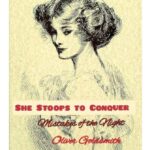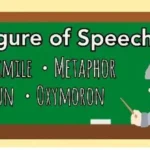The Road Not Taken Poem Summary Analysis Theme Questions Answers
The poem “The Road Not Taken” written by Robert Frost has been taken from the volume “Mountain Interval”. The Road Not Taken class 9 poem in cbse syllabus is the poem of a man who one might fairly call a spiritual drifter. Yet the poem has definite virtues. It tells us the choice of picking the right road or path of life. Let’s see the poem The Road Not Taken Summary Theme Questions Answers.
Summary of the poem The Road Not Taken:
Once travelling alone, the poet stops at a point where the two roads diverged in the wood. The poet, at first could not decide which path to take. After pondering on it for a long time, finally he choose one road because it seemed a little less frequented. The grassy road means that the road was not used or only a few people had walked through it.
After walking some distance on the road, the poet found actually there was no such difference. The passing there had worn out really about the same. Yet even at the moment of choice, the poet curiously imagines that the choice was important.
He would some day tell himself he took the less travelled road “and that has made all the difference”. The poet’s “difference” is in him from the beginning, long before he sets out from his career. The road that Robert Frost took was not only the “different” road, the right road for him, but the only road he could have taken.
Through this the poet conveys that in our life we has to take decision or make choice. But this choice has some advantages or some disadvantages. Problems are everywhere. So we must be ready to face them as we have to move ahead with the choice and we can not go back.
The Road Not Taken Poem Text:
The Road Not Taken
Robert Frost
Two roads diverged in a yellow wood,
And sorry I could not travel both
And be one traveler, long I stood
And looked down one as far as I could
To where it bent in the undergrowth;
Then took the other, as just as fair,
And having perhaps the better claim,
Because it was grassy and wanted wear;
Though as for that, the passing there
Had worn them really about the same.
And both that morning equally lay
In leaves no sleep had trodden black,
Oh, I kept the first fir another day!
Yet knowing how way leads on to way,
I doubted if I should ever come back.
I shall be telling this with a sigh
Somewhere ages and ages hence:
Two roads diverged in a wood, and I –
I took the one less traveled by,
And that has made all the difference.
About the poet Robert Frost:
Robert Frost was born in San Francisco on the 26th March. He graduated from Lawrence High School. His first volume of poems was published in London under the title “A Boy’s Will”. The second volume of poems appeared in London under the title ” North of Boston”. His volume “Mountain Interval” was published in New York. He won the Pulitzer Prize for poetry in 1931 for the first time. He again won the Pulitzer Prize for third time. His other volume of poetry include
Frost was a prolific writer. He was essentially a poet of Nature and in this respect he has affinity with Wordsworth. He is a lyric poet which is characterised by spontaneity and discipline. He describes poetry as metaphor. In his poetry we fund the combination of impulse and art. In all his poems, there is an inner significance. “Stooping by Woods” is a fine example of Frost’s theory of poetry as metaphor.
In 1914, Robert Frost directed publication of “North Boston”. This volume contains several of his most popular pieces, including “Mending Wall”, “The Death of the Hired Man” and “After Apple Picking”. Frost continued to write prolifically over the years and received numerous literary awards as well as honours from the United States Government and American universities. He died in Boston in 1963.
Theme of the poem The Road Not Taken:
The major theme of the poem, The Road Not Taken, is the problem of choice. The problem of choice is in a way elementary, since neither self-interest, moral obligation, nor even curiosity provides a real basis for preferring one road to another. The choice is wholly arbitrary, whimsical, undetermined.
The choice is an image of the choice of life. It is a powerful image and the power comes from the strange experience when Frost met his ‘own image’ in the woods near dusk at a place where two “lonely crossroads” intersected each other.
Style of the poem The Road Not Taken:
In this poem, the poet has used the stanza form that has been employed in other poems also. An entirely different modification occurs when the four stress lines are used in certain forms which are related to the ballad; in five lines stanza, the six line stanzas or the combined five-and-three stress lines.
Thus, here in this poem, Frost experimented the rhymes and stanzas. The poem is simple apparently as all Frost poems are, but the poet poses a baffling problem for the readers. The poem is epigrammatic with four stanzas of five lines each. Rhyme-scheme of the poem is ABAAB.
You May Like To Read More:
Ode To Autumn Summary Questions Answers
Ode To Nightingale Analysis Questions Answers
Explanation from the poem The Road Not Taken:
1. “Two roads diverged in a yellow wood,
And sorry I could not travel both
And be one traveller, long I stood
And looked down one as far as I could
To where it bent in the undergrowth;”
Ans: Once the poet was walking down in wood and found two roads diverged. The poet found difficult to decide which path to take as he was one person and he could travel only on one path. So he had to choose one out of these two roads.
The poet pondered over it for a long time in the “yellow wood” which represents a forest with withered leaves. Here the “yellow wood” represents the autumnal aspects of Nature. It represents a somber and decaying aspects of Autumn. It represents a world which is full of aging people, where people have been living for many years. The poet stood there and carefully saw the roads as far as he could see.
He was not sure which one is suitable for him as the roads were curved and it was covered with trees and was hidden. It happens in our life also when we have choices, we have alternatives, but we have to choose only one out of them. After thinking over the pros and cons, we take a decision to choose a path in our life.
2. “Though for that, the passing there
Had worn them really about the same.”
Ans: The poet had taken the road is grassy and is not worn out. He has taken the less travelled road. But as he passes, he finds the path worn out in the same way. So his choice proves delusive because it is an arbitrary and accidental choice. Again he does not know where the Road leads to. So he goes to an undefined destination. Uncertainty and incomprehensibility mark his choice. The problem of choice is indeed very difficult and uncertain.
3. “And both that morning equally lay
In leaves no step had trodden black
Oh, I kept the first for another day!
Yet knowing how way leads on to way,
I doubted if I should ever come back.”
Ans: While travelling in the wood, the poet found two roads before him to choose. The poet says that as he was one person, he could travel on one road only. The poet kept standing there and looked at the paths very carefully but found no difference between them. Here the choice of road is an image of the choice of life. The poet felt that both the paths were almost the same. There was hardly any difference between them. He did not know clearly where the road led to.
However, his choice had made all the difference to him. He decided to take one path and keep the other path for another day. Although he knew that he could not go back on the choice that he had already made. It gives the image of life which comes with different options to choose. We must keep moving with the option and never get the chance to come back and take the other option that we had left earlier.
4. “I shall be telling this with a sigh
Somewhere ages and ages hence:
Two roads diverged in a wood, and I-
I took the one less traveled by,
And that has made all the difference.”
Ans: The poet says that he shall tell to future generations ages from this day that two roads went in different directions in the wood he had taken the less travelled road. He had not taken the common road generally taken by travellers. His choice fell on the road not generally trodden by human feet. His choice is arbitrary and accidental. He did not say clearly why he chose the less travelled road nor did he know where the road to. However, his choice has made all the difference to him. He preferred the uncertainty of travelling to an undefined destination. That is his pleasure and whim.
Questions Answers from the poem The Road Not Taken:
1. What is the poem, The Road Not Taken about?
Ans: The poem, The Road Not Taken is about the problem of taking decision or choice that life presents before us at different situations of life. Here the word ‘Road’ symbolises the choices or options that we accept. Many a times we regret for our choices but we can not go back. In fact, it is the choice that shapes our future. So, we need to make the right choice. This is the message that has been metaphorically conveyed throughout the poem.
2. What is the theme of the poem, The Road Not Taken?
Ans: The major theme of the poem is the problem of picking the right choice or option in our life. The problem of choice is in a way elementary, since neither self-interest, moral obligation, nor even curiosity provides a real basis for preferring one road to another. The choice is often wholly whimsical and undetermined.
3. What does the word ‘Road’ symbolise in the poem The Road Not Taken?
Ans: Once travelling alone, the poet stopped at a point where the two roads diverged in the wood. The poet could not decide initially which path to take. Here the word ‘Road’ symbolically suggests choices or options that we accept in our life. The ‘Road’ Or path that us chosen by us determines our future and destination.
4. What was the problem faced by the poet while travelling in wood?
Ans: While travelling alone in wood, the poet came at a point where the two roads diverged. He was in a great problem to decide which path to take. Finally, the poet took the road which was grassy and was not worn out.
5. What does the expression “grassy and wanted wear” mean in the poem?
Ans: In the poem, the poet conveys that he has taken the road which is ‘grassy and wanted wear’. The ‘grassy’ road means that the road is not used and the ‘wanted wear’ means that only a few people have travelled through it.
6. What is meant by “yellow wood” ?
Ans: The poet here gives a pictorial description of the changing aspect of nature in the season of autumn. The word ‘yellow wood’ refers to the forest which has withering leaves, very common picture found in the season of autumn.
7. What are the literary devices used in the poem?
Ans: The poem is a fine exhibition of literary devices like Metaphor, Simile, Personification. The title of the poem itself exhibits the example of Metaphor. The word ‘Road’ here metaphorically suggests the choice or option that we face in different opportunities of life. The poet also uses Simile in second stanza, “as just as fair”. Here the poet compares road to an easy way through life.
8. Why did the poet choose the road “less traveled”?
Ans: While travelling alone in wood, the poet came at a point where the two roads diverged. He had to decide a road to move forward. Finally, the poet takes the road which was less travelled. He had not taken the common road generally taken by travellers.
His choice fell on the road not generally trodden by human feet. His choice was arbitrary and accidental. He did not say clearly why he had chosen the less travelled road nor did he know where the road led to. It may seem that the poet preferred the uncertainty of travelling to an undefined destination. That was his pleasure.
9. If the poet had travelled on the first road, would he have been happy?
Ans: Even if the poet would have taken the first road instead of the second, he would not have felt happy. In that case, he would have pondered upon his decision of not taking the unbeaten path. He would have reflected on opportunities he might have potentially lost. It is common human nature to fret on things unaccomplished.
10. Why does the poet say he will ‘sigh’ while telling his story one day?
Ans: In the closing stanza of the poem, the poet says that many years later he would tell his story ‘with a sigh’ because he still thinks of walking the first road. Perhaps, he thinks if he followed that path then life would have been different. The ‘sigh’ is because of the unfulfilled wish.
11. What is represented by the two diverging roads?
Ans: The two diverging roads represent the conflicting choices that appear in crucial juncture of our lives. We are not certain about which road to choose to achieve our dreams. We have to choose only one road based on assumptions. Life puts us infront of an uncertain future, because the choice we make might establish us.
12. The poet thought that the other road had “little better claim”. Why did the poet think so? What type of personality is represented by his choice?
Ans: The poet came to a point in the wood where he found two diverging roads. After a deep understanding he chose the road which he thought “had better claim”. The poet chose the road because it was covered with grass and less frequented.
It is understandable from the poet’s choice that he did not like to follow the track which the people took usually and common to all. He wanted to explore something new in life.
You May Like To Read More:










